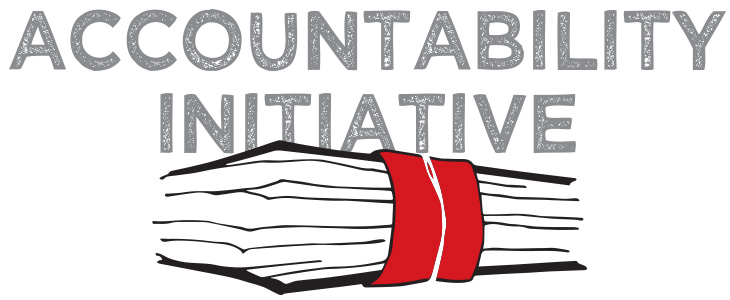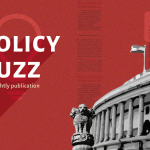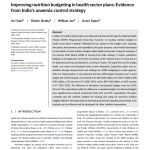
Demystifying Cash Transfers
18 January 2013
In his 2011 Budget Speech, the Finance Minister announced the replacement of the Public Distribution System with the direct transfer of subsidies to individuals living below the poverty line[1]. What has ensued since is a disparate range of opinions on the issue in the mainstream media and policy and academic circles. The conversation around cash transfers is progressing at a very rapid rate, (take a look at Accountability Initiative’s compendium of resources on D.C.T.s here),so much so that the popular opinion on the subject has been obscured. Understanding cash transfers as a tool for governance would require that we distill the political discourse from its policy implications.
In this blog post I shall explain what Cash Transfers are, discuss the various forms they may take and explain what issues related to governance they can be realistically expected to resolve.
In a service involving Cash Transfers, the state transfers cash directly into the accounts of the intended beneficiary so that he or she can use this money to purchase essential goods (food grains) and services (insurance, hospital treatment). These can be availed of from either the open market, or a stipulated government service provider. (This varies from scheme to scheme)
These cash transfers could be either conditional or unconditional.
A conditional cash transfer scheme would require the intended beneficiary to fulfill a certain behavioral condition in order to receive the cash benefit. The accompanying condition is designed to incentivize a developmental outcome. For example, in the Janani Suraksha Yojana (J.S.Y.) pregnant women are paid between Rs 1000 to Rs 1400 to deliver their babies in a hospital (or with the assistance of a qualified health worker in some cases)[2]
Unconditional cash transfers on the other hand do not require the beneficiary to fulfill any such behavioral condition – they receive the cash simply by virtue of belonging to a certain socio-economic or demographic bracket. Old age pensions are an example of unconditional cash transfers, wherein people receive the benefit by virtue of belonging to an eligible age group.
Cash transfer schemes, whether conditional or unconditional can be either universal or targeted. Universal schemes include all members of a said population (The Janani Suraksha Yojana for instance is universal in states deemed as ‘Low Performing’)[3] Targeted cash transfer schemes identify a certain segment of the population (such as B.P.L. or A.P.L. families). as recipients of the benefit.
The efficacy of a cash transfer scheme, like all other schemes, would therefore depend largely on its specific design, and how well suited it is to the context to which it is being applied.
Cash transfers operate on the rationale that the beneficiary has complete control over the cash and/or is now free to choose where he or she will avail of a service, if the said scheme allows him to make that choice (The P.D.S. cash subsidy, for instance will allow to the beneficiary to chose what shop he or she will buy grain from.) Proponents of the idea claim that D.C.Ts ‘improve the efficiency and reach of welfare benefits for the underprivileged.’[4] The Government of India in a recent press release stated that Direct Cash Transfers (D.C.T.) were a means to “improve targeting, reduce corruption, eliminate waste, control expenditure and facilitate reforms.”[5] It might be useful to use the terms in this statement as our main points of enquiry
Firstly, can Direct Cash Transfers Improve Targeting?
In fact the converse is true. Cash Transfers are simply a means for streamlining payments, and cannot in themselves ensure that all eligible persons are successfully targeted by a program. A sound targeting strategy is actually a prerequisite to the effectiveness of cash transfers and not vice versa. A study by Rema Hanna, Abhijit Bannerjee, Benjamin Olken and Vivi Atlas discuss in detail the various methodologies that can be used for accurately identifying eligible members for Cash Transfer Schemes.[6] It is based on the very premise that iIdentifying or ‘targeting’ the poor to determine eligibility for a government’s anti-poverty program is challenging because the government often lacks verifiable records of people’s income and assets. Targeted social programs can have mis-targeting rates of over 40 per cent which means that many social programs designed to help the poor never even reach them.
Secondly, can Direct Cash Transfers Reduce Corruption?
A cash transfer scheme could potentially help prevent corruption through leakages and diversions (because there are no physical resources such as grains or medicines that need to be handled anymore) and even duplication fraud if it is leveraged on a technology platform (such as the current PDS subsidy transfer that operates through aadhar). In a 2010 study, Dutta, Howes and Murgai[7] concluded that the popular DCT based social pension schemes (old age pension and widow pension) in Karnataka and Rajasthan have much lower levels of leakage than the public distribution system (PDS) . The authors argue that one of the possible explanations of this could be low levels of discretion in the cash transfer process.
That said, corruption in the delivery of welfare services has multipronged manifestations, and it is unclear how the statement differentiates between its varying forms – corruption at the lowest levels for instance, is not merely limited to pilfering by middlemen. A paper by Jennifer Davis[8] on ‘Corruption in Public Service Delivery’ cites evidences from the water and sanitation sector in India, where ‘corruption’ practices took as varied forms as ‘ customers meting out informal payments to expedite meter repairs’ and unfair bidding practices to private contractors amongst others. These and other prevalent forms of corruption, such as non transparent practices in remote and local decision making processes cannot be tackled by cash transfers.
Thirdly, Can Cash Transfers Eliminate Waste and Control Expenditure?:
Describing the government’s ambitious direct cash transfer scheme as a “powerful tool”, Reserve Bank Deputy Governor K C Chakrabarty has said the initiative will help reduce fiscal deficit, which in turn will also bring down inflation if implemented well.. He accrued this to the stimulus to the economy caused by an increase in public spending due to cash actually reaching the hands of the beneficiaries, which could be significant given that estimates posit the loss due to subsidy leakages at nearly 40 percent. [9] Others opine that beneficiaries are rendered vulnerable to the increasing cost of goods and services due to inflation, an argument that has not as yet seen a direct counter.
The National Institute of Public Finance and Policy recently conducted a cost benefit analysis of aadhar enabled cash transfers and concluded that despite all costs, the returns to the government through the program for a host of social sector schemes was as much as 52.85 per cent.[10] The study attributed this to the lowered operational costs that cash transfers enable.
And Lastly, Are Cash Transforms a means to Facilitate Reforms? :
While the term ‘reforms’ is very broad, It is clear from the literature available that cash transfers hold promise to correct certain very specific issues ailing public service delivery – namely leakages, diversions and fraud. As I’d mentioned above, evidences suggest that they significantly lower operational costs and may also have other intangible benefits. The impact of cash transfer programs on social policy varies from place to place as a consequence of the differing nature in program design and the context in which they operate. Papers have concluded that conditional cash transfers have caused an increase in the use of services – school enrollment rates have seen significant increases in middle income and low income countries such as Nicargua, Mexico and Barbados.[11] In India, the success of the Janani Suraksha Yojana, another cash transfer scheme has been well documented. [12]
The impending need in the Indian context currently is for rigorous trials and research to bolster the case for cash transfers. That the Government of India has taken to cash transfers with alacrity is certain, but there is a need for the decisions to be backed by a sound, evidence backed policy rationale.
[1] Budget 2011-12, Speech of the Minister of Finance, http://indiabudget.nic.in/budget2011-2012/ub2011-12/bs/bs.pdf
[2] Guidelines for Janani Suraksha Yojana, Ministry of Health and Family Welfare, [2] JSY Guidelines, Ministry of Health and Family Welfare, Government of India, http://www.mohfw.nic.in/NRHM/RCH/guidelines/JSY_guidelines_09_06.pdf
[3] The scheme has identified Uttar Pradesh, Uttaranchal, Bihar, Jharkhand, Madhya Pradesh, Chhattisgarh, Assam, Rajasthan, Odisha and Jammu and Kashmir as “Low performing states” based on their lower rates of institutional delivery.( From Guidelines of the JSY, 2006, Ministry of Health and Family Welfare http://mohfw.nic.in/WriteReadData/l892s/file28-99526408.pdf)
[4] Interim Report of the Task Force on Direct Transfer of Subsidies on Kerosene, LPG and Fertiliser, Chaired by the Chairman of the UIDAI, June 2011, http://finmin.nic.in/reports/Interim_report_Task_Force_DTS.pdf
[5] Press Information Bureau, Press release by Prime Minister’s Office, dated 28th September 2012, http://pib.nic.in/newsite/erelease.aspx?relid=88048
[6] Bannerjee Abhijit, Atlas Vivi, Tobias Julia Olken Benjamin,Hanna Rema, Targetting the Poor: Evidence from a field experiment in Indonesia, May 2010, http://economics.mit.edu/files/5577
[7] Murgai Rinku, Dutta Puja, Howes Stephen, Small But Effective : India’s Targetted Unconditional Cash Transfers, ASARC working paper, 2010,http://www.crawford.anu.edu.au/acde/asarc/pdf/papers/2010/WP2010_18.pdf
[8] Davis, Jennifer, Corruption in Public Service Deliver, Massachusetts Institute of Technology, http://www.google.co.in/url?sa=t&rct=j&q=&esrc=s&source=web&cd=1&ved=0CDoQFjAA&url=http%3A%2F%2Funpan1.un.org%2Fintradoc%2Fgroups%2Fpublic%2Fdocuments%2Fapcity%2Funpan047339.pdf&ei=DpP3UK21J8LprQe6pYD4CA&usg=AFQjCNFMpihaIstEmlUxSSOapc83NE3AJQ&sig2=wd0jm3TMU3dkQAJvJMqf9g&bvm=bv.41018144,d.bmk&cad=rja
[9] Ghosh Jayati, ‘The Siren Song of Cash Transfers’, The Hindu, March 2011, http://www.thehindu.com/opinion/lead/article1504114.ece
[10] A Cost Benefit Analysis of Aadhaar, National Institute of Public Finance and Policy, November 2012, http://planningcommission.nic.in/reports/genrep/rep_uid_cba_paper.pdf
[11] Fiszbein Ariel, Schady Norbert, Conditional Cash Transfers, Reducing Present and Future Poverty, World Bank Policy Report, 2009.
[12] Dongre, Ambrish A. and Kapur, Avani, How is Janani Suraksha Yojana Performing in Backward Districts of India? (January 3, 2013). Available at SSRN: http://ssrn.com/abstract=2197248 or http://dx.doi.org/10.2139/ssrn.2197248





